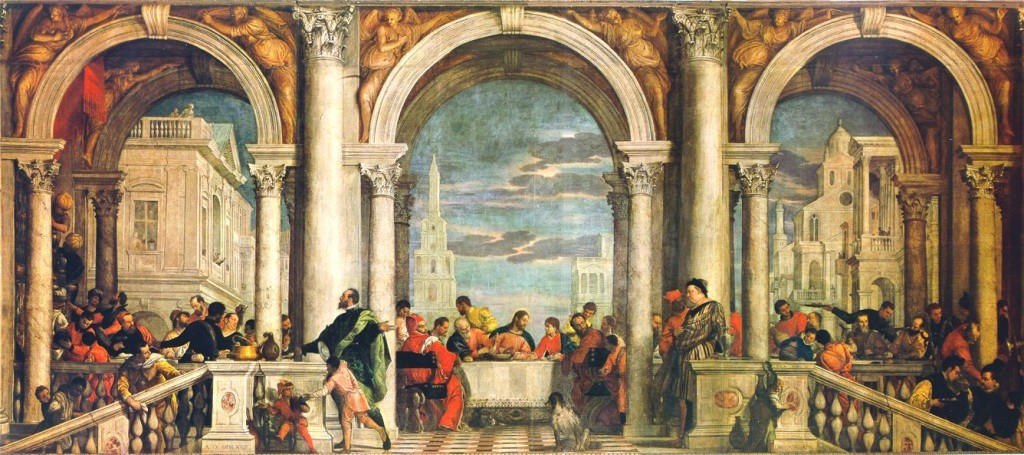First, watch this Monty Python sketch. Because Monty Python, that’s why.
Awesome, as usual. But did you know that this sketch was probably actually based on true events concerning the painter Paolo Veronese and his 1573 painting Feast in the House of Levi?
Here’s what happened: Veronese was commissioned to paint a Last Supper to adorn the wall of a refectory in a Dominican friary–which was typical decor for friaries and nunneries at the time. Veronese, taking some artistic license, came up with this.

Very busy, isn’t it? It’s quite different from Leonardo da Vinci’s The Last Supper. Before we judge Veronese too hard for his loaded painting, let’s remember that he’s trying not to look like Leonardo. There’s only so much one can do with the Last Supper as an artist that hasn’t been done already.
However, Veronese’s addition of servants, entertainers, and much more wasn’t exactly appreciated by the Catholic Church. Coming at a pivotal moment—the Reformation was sweeping across Europe, and the Catholics were in the midst of a reformation of their own to combat charges of corruption and heresy in their own tradition—Veronese’s imaginative and overloaded painting was found a bit offensive. The general feeling was that, though it may not necessarily contain Jell-O, a conjurer, or a mariachi band, Veronese’s Last Supper certainly looks more like a Venetian nobleman’s feast than the last meal of Christ, the exact kind of extravagance among religious leaders that the Catholic Church was trying to correct at the time.
Veronese was brought before a court for not sticking closely to the typical conventions for a Last Supper painting. He was given three months to change the painting. So, rather than edit his original work, Veronese simply changed the title of the painting to Feast in the House of Levi, another meal listed in the Bible in which no exact number of attendees is given. How about that for a quick fix?
The guys of Monty Python clearly had some art historical training, as there’s almost no way they could have come up with that skit without knowing about the story behind Feast in the House of Levi. Knowing a bit about art history, it seems, truly does open up more opportunities to not only feel more cultured, but to get more out of jokes as well.







